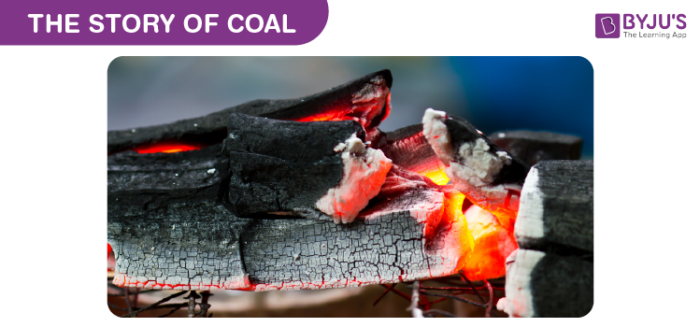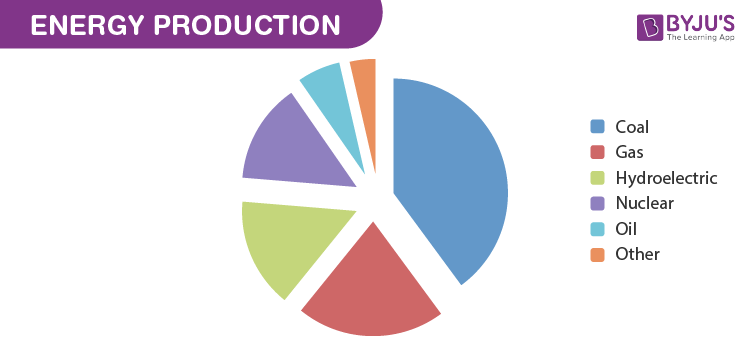What is Coal?
Coal is a fossil fuel and is the altered remains of prehistoric vegetation that originally accumulated in swamps and peat bogs.
Table of Contents
- Coal
- Recommended Videos
- How is Coal Formed?
- How is Coal Obtained?
- Uses of Coal
- Frequently Asked Questions – FAQs
Coal
The energy we get from coal today comes from the energy that plants absorbed from the sun millions of years ago.

Did you know that coal contributes approximately 40% of the world’s electricity production? In other words, the world relies on this fossil fuel for energy production more than any other energy source, including oil, natural gas, nuclear sources, the sun, water, and the wind. As of now, a number of coal deposits present will last for another 300 years, but after that, as it is an exhaustible natural resource, there will be none of this fossil fuel left.

Recommended Video
How is Coal Formed?

How is Coal Formed?
- The formation of coal takes millions of years, which is why it is an exhaustible and non-renewable natural resource.
- It was formed around 300 million years ago when the earth was covered with swampy forests.
- When plants in these forests- mainly trees, mosses, ferns, and reeds died, they fell into the swamps.
- Thus, there was a thick layer of dead vegetation in the swamp formed.
- As years passed, more and more plants died and many such layers were formed, one above each other.
- The topmost layers compressed the layers below. Heat and pressure caused some physical and chemical changes and eventually, some carbon-rich deposits were formed.
How is Coal Obtained?
- It is obtained from the underground seams, which are the layers of ores and are thick enough to be mined with profitable results.
- There are two ways in which mining can be done- underground and open pit. Determining the type of mining depends on the depth of the deposit.
- Vertical shafts are dug to access the deposits through underground mining, whereas in surface or open-pit mining, soil and rocks that lie on top of the mineral deposits are removed.
- The cost of surface mining is lesser than that of underground mining. This is why the surface mining is more dominant.
Uses of Coal
- It is mainly used to generate heat and electricity.
- It is used in households and in industries to accomplish various tasks.
- It is the cheapest source of power fuel.
- The iron and steel industry depends heavily on fossil fuel for energy.
- It is also used to produce useful products such as coke, tar, and coal gas.
- This fossil fuel was responsible for the Industrial Revolution of the 19th century.
Related Videos
Coal and Petroleum – Natural Resources

Coal and its Useful Products

Frequently Asked Questions – FAQs
How are coal and petroleum found?
Coal and petroleum were formed from the remains of dead animals and plants that underwent different biological and geological processes. Coal is the remnants of trees, ferns, and other plants that lived several million years ago. Earthquakes or volcanic eruptions have crushed these.
Is coal obtained from petroleum?
The term “petroleum” refers to rock oil or oil extracted from the ground. Petroleum products are fuels manufactured from crude oil and natural gas hydrocarbons. Coal, natural gas, and biomass may all be used to make petroleum products.
What is the origin of coal and petroleum?
Coal and oil are of organic origin, decomposed plant matter and animal waste buried deep within the earth. The name petroleum was given to crude oil because it occurs in rocks under the Earth’s crust.
What are the 4 types of coal?
Coal is a commodity regarded as a fossil fuel that is not renewable. It’s the most fossil fuel we’ve got. The four types of coal are peat, lignite, bituminous, and anthracite, with the high heat content of anthracite being the most desirable.
What is the element of coal?
Coal is mostly carbon with varying quantities of other elements; primarily hydrogen, sulphur, oxygen, and nitrogen.
To know more about the by-products of coal and other fossil fuels such as petroleum and natural gas, download BYJU’S – The Learning App.



Comments